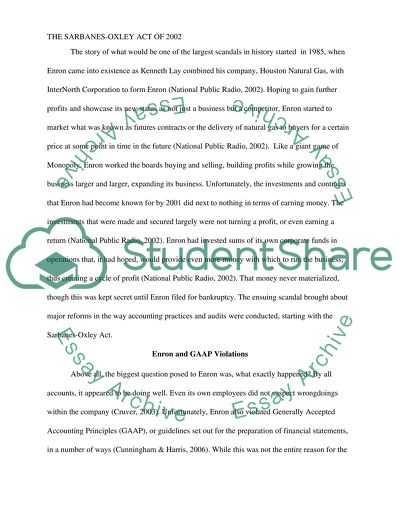Cite this document
(“The Sarbanes-Oxley Act of 2002 Research Paper Example | Topics and Well Written Essays - 4750 words”, n.d.)
Retrieved de https://studentshare.org/finance-accounting/1391674-auditing-and-internal-control
Retrieved de https://studentshare.org/finance-accounting/1391674-auditing-and-internal-control
(The Sarbanes-Oxley Act of 2002 Research Paper Example | Topics and Well Written Essays - 4750 Words)
https://studentshare.org/finance-accounting/1391674-auditing-and-internal-control.
https://studentshare.org/finance-accounting/1391674-auditing-and-internal-control.
“The Sarbanes-Oxley Act of 2002 Research Paper Example | Topics and Well Written Essays - 4750 Words”, n.d. https://studentshare.org/finance-accounting/1391674-auditing-and-internal-control.


